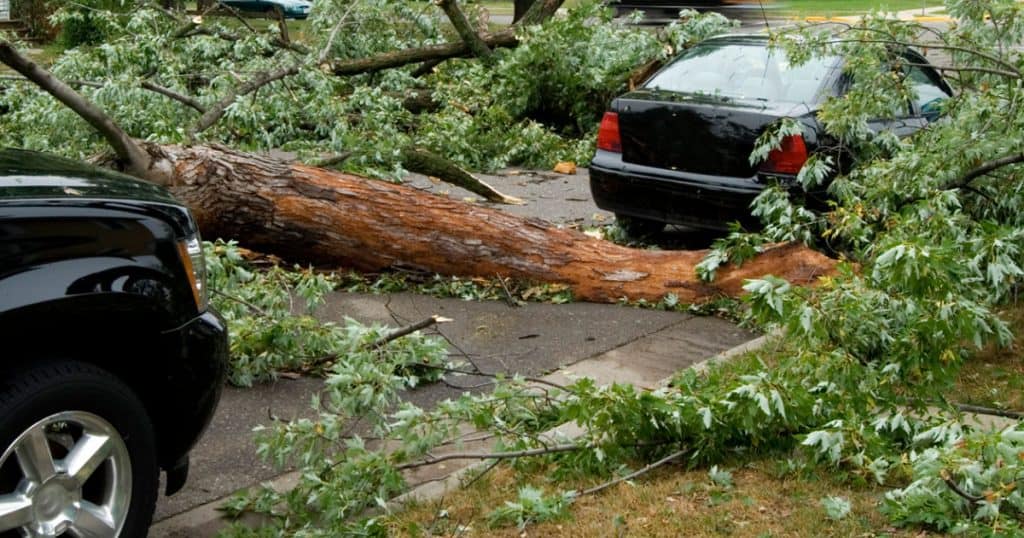The 2021 hurricane season is off to a fast start. When Hurricane Elsa barreled through the Lesser Antilles last week, it became the first major storm of the year—and broke 2020’s record for the earliest recorded storm beginning with the letter “E”.
As of press time, Tropical Storm Elsa was threatening the Southeast United States, providing the perfect opportunity to take a good, hard look at your company’s disaster preparedness situation.
Depending on your geographic location, hurricanes might not be a concern. But just as the Atlantic and Gulf Coasts were gearing up for that threat, the West Coast was dealing with a record-breaking heatwave that could exacerbate an already active fire season. And many parts of North America are grappling with a surge in new cases of the Delta variant, a stronger, more spreadable version of COVID-19.
In the face of so much uncertainty, the need for proactive disaster preparation and business readiness is clearer than ever. Whether your company is planning for the worst or hoping for the best this summer, we have to assume it’s a matter of when, not if, a disaster will strike.
Remote backup is critical—particularly when paired with disaster preparedness and business continuity protocols that can mean life or death for an impacted business. According to the Federal Emergency Management Agency (FEMA), 40-60% of small businesses never reopen their doors following a disaster—and 90% of smaller companies fail within a year if they can’t safely resume operations five days after a disaster.
The disparity between small and large businesses is even more glaring when it comes to business continuity. Defined as an organization’s ability to make sure core business functions are not severely impacted by an unplanned incident that takes critical systems offline, business continuity isn’t as widespread as you’d expect.
According to FEMA, 1 in 5 companies spends zero time maintaining their business continuity plan, while 20% of larger companies devote more than 10 days a month to such plans.
Working with a trusted IT provider, you can perform a detailed data assessment that categorizes all assets by priority, location, and access needs. That way, you can ensure the most important information is backed up regularly, remotely, and redundantly. The vast majority of business backups are performed manually and on-site—often on physical hard drives located directly next to the computers they’re backing up. If fire, flood, or theft affects your business, those backups often won’t be spared. With automatic backups stored in a combination of physical and cloud locations, you can be confident that your data is there when you need it.
Maintaining reliable access to those backups is equally important. At CMIT Solutions, our data backup plans come with robust data recovery procedures baked right in. That means affected businesses can retrieve their information as quickly as possible to support a return to day-to-day business operations. Here’s that FEMA stat again for emphasis: 90% of smaller companies fail within a year if they can’t resume operations five days after a disaster.
Robust data recovery plans include a section dedicated to virtualization. This outlines which computers can be used to reinstate and rebuild compromised data and which users have the necessary access rights to jumpstart the recovery process. Such steps can be completed remotely if needed, with key machines designated as failsafe options in the case of physical damage to your office or its existing systems. The important thing here is testing: you don’t want to wait to find out whether recovery actually works in the wake of a disaster, and you want to know exactly how long it takes to perform a full restore of your data. A few hours one way or the other can mean the difference between weathering a storm and suffering from it.
What sets recovery and virtualization plans apart from continuity plans? The former includes explicit instructions to follow at a specific point in time; the latter outlines a coordinated plan for business survival from that recovery point forward. A robust template for business continuity doesn’t just get your business back on its feet in the immediate aftermath of a disaster. It spells out the short- and long-term steps needed to continue surviving and thriving in the face of unprecedented problems that could last for days (in the case of hurricanes), weeks (in the case of fires or floods), or even months and years (in the case of the COVID-19 pandemic).
Unlike automated technology processes, these can’t be planned perfectly. We all respond differently to different types of disasters, and when it comes to weather, there’s only so much that preparation can cover. But by outlining the steps that your employees will take in terms of communication, responsibility, and day-to-day response, your business can be as ready as possible for anything that Mother Nature (or a cybercriminal, or simple human error) throws at you.
Some businesses stand to lose the most from natural disasters, especially if they’re located in vulnerable areas like the Southeast United States or California, where hurricanes and fires are common. Other businesses have to worry more about ransomware, phishing attempts, and data breaches. No matter what threats your company faces, CMIT Solutions can help you prepare for them.
Our North America-wide network takes a proactive approach to cybersecurity. With around-the-clock monitoring and maintenance, strong data backup procedures, and practical incident response plans, we help our clients weather hurricanes, floods, wildfires, pandemics, ice storms, and other day-to-day disasters.
Want to know more about how CMIT Solutions can help you overcome obstacles and respond to any problem? Contact CMIT Solutions today to find out.

